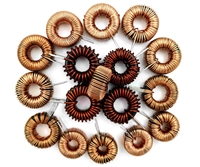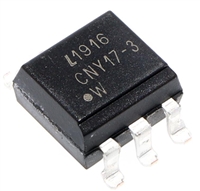ADP120
temperature changes. These parameters include ambient temper-
ature, power dissipation in the power device, and thermal
resistances between the junction and ambient air (θJA). The θJA
number is dependent on the package assembly compounds that
are used and the amount of copper used to solder the package
GND pins to the PCB. Table 6 shows typical θJA values of the
5-lead TSOT and 4-ball WLCSP packages for various PCB
copper sizes. Table 7 shows the typical ΨJB value of the 5-lead
TSOT and 4-ball WLCSP.
CURRENT-LIMIT AND THERMAL OVERLOAD
PROTECTION
The ADP120 is protected against damage due to excessive
power dissipation by current and thermal overload protection
circuits. The ADP120 is designed to current limit when the
output load reaches 150 mA (typical). When the output load
exceeds 150 mA, the output voltage reduces to maintain a
constant current limit.
Thermal overload protection is built-in, limiting the junction
temperature to a maximum of 150°C (typical). Under extreme
conditions (that is, high ambient temperature and power dissi-
pation) when the junction temperature starts to rise above 150°C,
the output turns off, reducing the output current to zero. When
the junction temperature drops below 135°C, the output turns
on again thereby restoring output current to its nominal value.
Table 6. Typical θJA Values
θ
JA (°C/W)
Copper Size (mm2)
TSOT
170
152
146
134
131
WLCSP
01
260
159
157
153
151
50
100
300
500
Consider the case where a hard short from VOUT to GND
occurs. At first, the ADP120 current limits, conducting only
150 mA into the short. If self-heating of the junction is great
enough to cause its temperature to rise above 150°C, thermal
shutdown activates, turning off the output and reducing the
output current to zero. As the junction temperature cools and
drops below 135°C, the output turns on and conducts 150 mA
into the short, again causing the junction temperature to rise
above 150°C. This thermal oscillation between 135°C and 150°C
causes a current oscillation between 150 mA and 0 mA that
continues as long as the short remains at the output.
1 Device soldered to minimum size pin traces.
Table 7. Typical ΨJB Values
ΨJB (°C/W)
TSOT
WLCSP
58.4
42.8
The junction temperature of the ADP120 can be calculated
from the following equation:
TJ = TA + (PD × θJA)
(2)
(3)
Current- and thermal-limit protections are intended to protect
the device against accidental overload conditions. For reliable
operation, device power dissipation must be externally limited
to prevent junction temperatures from exceeding 125°C.
where:
TA is the ambient temperature.
PD is the power dissipation in the die, given by
PD = [(VIN − VOUT) × ILOAD] + (VIN × IGND
)
THERMAL CONSIDERATIONS
where:
In most applications, the ADP120 does not dissipate much heat
due to its high efficiency. However, in applications with high
ambient temperature and high supply voltage-to-output voltage
differential, the heat dissipated in the package is large enough to
cause the junction temperature of the die to exceed the maximum
junction temperature of 125°C.
I
I
LOAD is the load current.
GND is the ground current.
V
IN and VOUT are input and output voltages, respectively.
Power dissipation due to ground current is quite small and
can be ignored. Therefore, the junction temperature equation
simplifies to the following:
When the junction temperature exceeds 150°C, the converter
enters thermal shutdown. It recovers only after the junction
temperature has decreased below 135°C to prevent any permanent
damage. Therefore, thermal analysis for the chosen application
is very important to guarantee reliable performance over all
conditions. The junction temperature of the die is the sum of
the ambient temperature of the environment and the tempera-
ture rise of the package due to the power dissipation, as shown
in Equation 2.
TJ = TA + {[(VIN − VOUT) × ILOAD] × θJA}
(4)
As shown in Equation 4, for a given ambient temperature, input-
to-output voltage differential, and continuous load current, there
exists a minimum copper size requirement for the PCB to ensure
the junction temperature does not rise above 125°C. The following
figures show junction temperature calculations for different
ambient temperatures, load currents, VIN-to-VOUT differentials,
and areas of PCB copper.
To guarantee reliable operation, the junction temperature of
the ADP120 must not exceed 125°C. To ensure the junction
temperature stays below this maximum value, the user needs to
be aware of the parameters that contribute to junction
Rev. A | Page 14 of 20










 压敏电阻器在直流电路中的过压保护应用探讨
压敏电阻器在直流电路中的过压保护应用探讨

 电感耐压值及其与电感大小的关系
电感耐压值及其与电感大小的关系

 CNY17F光耦合器:特性、应用、封装、引脚功能及替换型号解析
CNY17F光耦合器:特性、应用、封装、引脚功能及替换型号解析

 DS1307资料解析:特性、引脚说明、替代推荐
DS1307资料解析:特性、引脚说明、替代推荐
